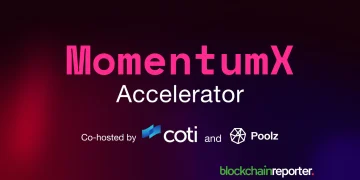The emergence of Web3 technology has sparked a new wave of innovation in the world of blockchain, and investors are taking notice. In recent years, we have seen a significant increase in the number of Web3 investors investing in blockchain platforms and decentralized applications (dApps), recognizing this technology’s potential to transform how we interact and transact online. According to a recent press release, DWF Labs, a leading investor in the Web3 space, has made a significant investment in the blockchain platform Conflux. The investment of $10 million is a significant milestone for Conflux and marks a breakthrough in the platform’s efforts to establish itself as a major player in the decentralized web.
$10 Million Investment Signals Major Breakthrough For Conflux
The significance of Web3 investors’ investment in blockchain platforms cannot be overstated. These investments provide critical funding that allows blockchain platforms to scale and develop their technology, attract talent, and build ecosystems of dApps and developers. Additionally, these investments signal a growing interest and confidence in the potential of Web3 technology, which can have a positive impact on the broader adoption and integration of blockchain into mainstream industries.
DWF Labs has invested $10 million in Conflux, a Layer 1 blockchain developer, to support the expansion of its technology and user base. The investment was confirmed by Conflux co-founder Fan Long, who stated that the investment had been settled “a few days ago.”
As part of the investment, DWF Labs purchased Conflux (CFX) tokens from the project’s team and foundation reserve, which will be unlocked linearly over time. Long emphasized that DWF Labs’ “strategic investment” will provide significant assistance to Conflux in building its ecosystem.
The infusion of funds from DWF Labs will enable Conflux to accelerate its growth and development, expand its partnerships, and advance its research and development efforts. With the support of Web3 investors like DWF Labs, Conflux is well-positioned to establish itself as a major player in the blockchain space and to drive the growth and adoption of decentralized applications and technologies.
Conflux Emerges As A Key Player In China
According to Fan Long, the co-founder of Conflux and an assistant professor of computer science at the University of Toronto, the blockchain platform was developed by him and Andrew Chi-Chih Yao, the only Chinese Turing Award winner who serves as Conflux’s chief scientist. Although the Conflux network was launched in 2020, it has recently gained attention due to its partnerships with China Telecom, the country’s second-largest wireless carrier, and Little Red Book, China’s version of Instagram.
Long claims that Conflux is “the only regulatory compliant permissionless blockchain in China” and that the project’s core research and development team is entirely Chinese. Unlike other public chains, Conflux did not engage in ICO-like activities, which are prohibited by the Chinese government, he added. Furthermore, Long revealed that the Shanghai government provided a grant of over $5 million to Conflux in 2021. Long further stated that with the newly acquired funds, the platform plans to expand its ecosystem in line with Hong Kong’s new web3 policy.
Hong Kong recently announced that it would allocate $6.4 million (HK$50 million) towards the development of its Web3 ecosystem. Additionally, Hong Kong’s Securities and Futures Commission has proposed rules for virtual asset platforms. At present, Conflux has a team of around 70 people, and Long has revealed that the project has no immediate plans for hiring more staff.
The $10 million investment from DWF Labs has increased Conflux’s total funding to over $50 million. According to Long, the platform had raised more than $40 million before this investment.
With the support of investors like DWF Labs and the backing of Hong Kong’s wWb3 policy, Conflux is well-positioned to continue its growth and development in the blockchain space. Its adherence to Chinese regulations and partnerships with leading companies in the region gives it a competitive edge, and it will be interesting to see how the platform utilizes its funds to expand its ecosystem and advance its technological capabilities.























